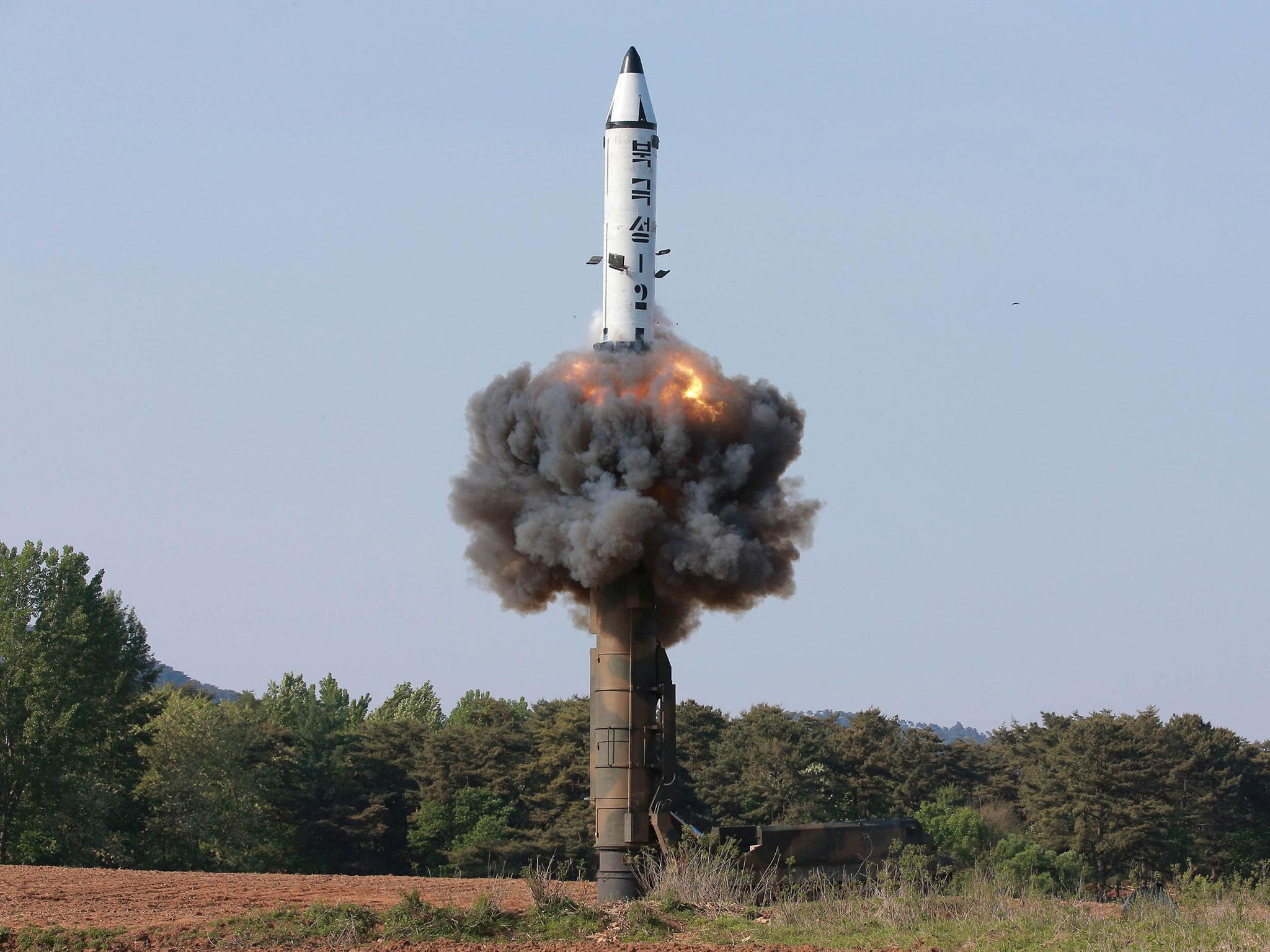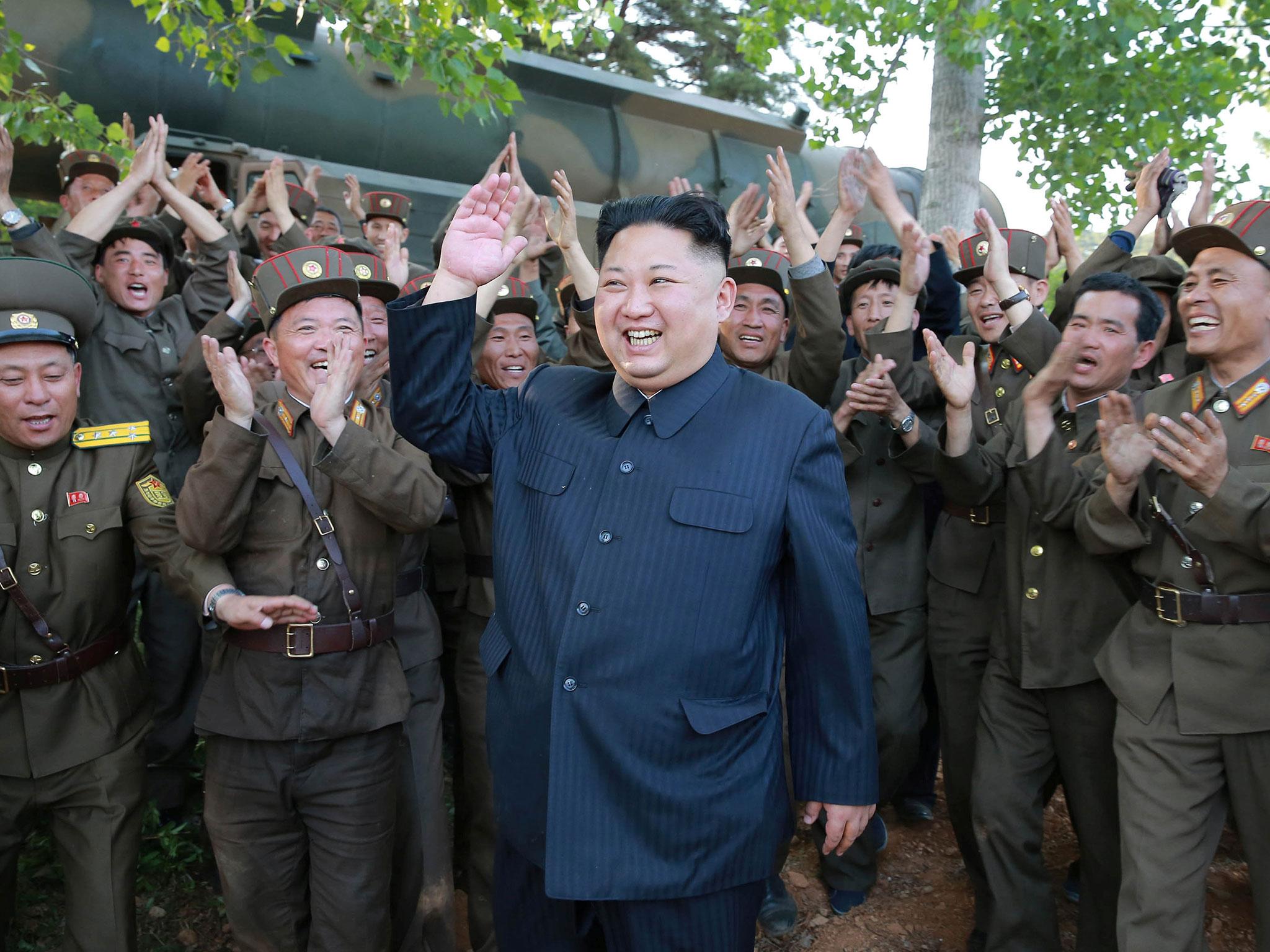North Korea orders mass production of new ballistic missile capable of striking Japan and major US military bases
Dictator Kim Jong-un says missile meets all required technical specifications and should now be deployed to the Korean People's Army strategic battle unit

Your support helps us to tell the story
From reproductive rights to climate change to Big Tech, The Independent is on the ground when the story is developing. Whether it's investigating the financials of Elon Musk's pro-Trump PAC or producing our latest documentary, 'The A Word', which shines a light on the American women fighting for reproductive rights, we know how important it is to parse out the facts from the messaging.
At such a critical moment in US history, we need reporters on the ground. Your donation allows us to keep sending journalists to speak to both sides of the story.
The Independent is trusted by Americans across the entire political spectrum. And unlike many other quality news outlets, we choose not to lock Americans out of our reporting and analysis with paywalls. We believe quality journalism should be available to everyone, paid for by those who can afford it.
Your support makes all the difference.North Korea has said it is ready to begin mass production of a new medium-range ballistic missile capable of reaching Japan and major US military bases.
The North fired the missile into waters off its east coast on Sunday, its second weapons test in a week.
The solid-fuel Pukguksong-2 (Poseidon-2) missile flew about 500km (310 miles) and reached a height of 560km (350 miles) before plunging into the Pacific Ocean.
Kim Jong-un supervised the test, which confirmed reliable late-stage guidance of the warhead and the functioning of a solid-fuel engine, the KCNA state news agency said.

It quoted Kim as saying the Pukguksong-2 met all the required technical specifications so should now be mass-produced and deployed to the Korean People's Army strategic battle unit.
“Saying with pride that the missile's rate of hits is very accurate and Pukguksong-2 is a successful strategic weapon, he approved the deployment of this weapon system for action,” KCNA said, quoting Kim.
The launch verified the reliability and accuracy of the solid fuel engine’s operation and stage separation and the late-stage guidance of the nuclear warhead which was recorded by a device mounted on the warhead, the report added.
“Viewing the images of the Earth being sent real-time from the camera mounted on the ballistic missile, Supreme leader Kim Jong-un said it feels grand to look at the Earth from the rocket we launched and the entire world looks so beautiful.”
Pyongyang has defied all calls to rein in its nuclear and missile programmes, even from China, its lone major ally, saying the weapons are needed for defence against US aggression.
The UN Security Council is due to meet on Tuesday to discuss the latest test, which defies Security Council resolutions and sanctions.
President Trump has warned a “major, major conflict” with North Korea is possible, and in a show of force, sent the USS Carl Vinson aircraft carrier strike group to Korean waters to conduct drills with South Korea and Japan.
Rex Tillerson, the US Secretary of State, said economic and diplomatic pressure would continue.
“We cannot absolutely tolerate the missile launch on May 21 and repeated provocative remarks and actions by North Korea,” Yoshihide Suga, Japan's chief cabinet secretary, said.
“It is important to lower North Korea's foreign currency earnings and prevent nuclear missile related shipment and technological transfer in order to prevent North Korea's nuclear missile development. We will fully implement our own sanctions against North Korea.”
China repeated its call for all parties to exercise restraint to not let tension mount further.

The use of solid fuel presents advantages for weapons because the fuel is more stable and can be transported easily in the missile’s tank allowing for a launch at very short notice.
“For military purposes, solid-fuelled missiles have the advantage that they have the fuel loaded in them and can be launched quickly after they are moved to a launch site,” David Wright, co-director of the Global Security Program at the US-based Union of Concerned Scientists, wrote in a blog post.
“Building large solid missiles is difficult,” he said, adding it took decades for major superpowers such as France and China to go from a medium-range missile to an intercontinental ballistic missile.
South Korea’s military said the test provided more “meaningful data” for the North's missile programme but whether the North mastered the re-entry technology for the warhead needs additional analysis.
The reclusive state has been working to develop a nuclear-tipped missile capable of striking the US mainland and on Saturday said it had developed the capability, although Western missile experts say the claim is exaggerated.
Some experts believe it will be 2030 or later for the North to develop the technology. But KCNA said last week’s missile test put Hawaii and Alaska within range.
North Korea regularly threatens to destroy the United States which it accuses of preparing for an invasion.
South Korea hosts 28,500 US troops to counter the threat from the North: a legacy of the Korean War, which ended in a truce rather than a peace treaty.
Additional reporting by agencies
Join our commenting forum
Join thought-provoking conversations, follow other Independent readers and see their replies
Comments